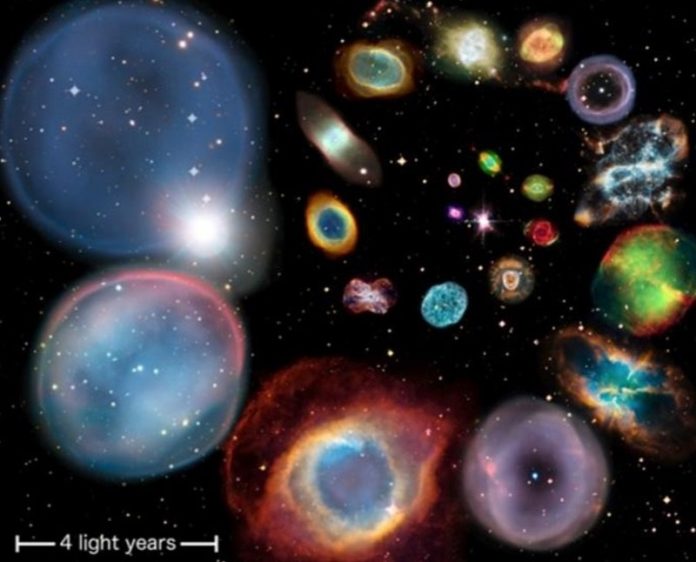
You’ve probably heard of detectives, but have you ever heard of star detectives?
A group of scientists from The University of Manchester and the University of Hong Kong have cracked a decade-old mystery about stars in our galaxy, the Milky Way.
Ten years ago, a student named Bryan Rees found something odd: a bunch of “ghost” stars or “planetary nebulae” seemed to line up in a certain way near the center of our galaxy. No one knew why this was happening, until now.
First off, you might wonder, what are planetary nebulae? They’re actually like cosmic ghosts left behind by dying stars.
When stars like our Sun reach the end of their lives, they puff out their outer layers of gas, forming these beautiful, glowing clouds. These “ghosts” often have stunning shapes like hourglasses or butterflies.
The star detectives studied a group of these planetary nebulae in a thick part of our galaxy called the Galactic Bulge.
Although these nebulae come from different stars that lived in different places and at different times, many of them align almost parallel to the Galactic plane (that’s our Milky Way).
The big clue in this cosmic mystery? The aligned nebulae all have a close companion star. This partner star orbits the main star at the center of the planetary nebulae, much closer than Mercury is to our Sun.
Interestingly, the planetary nebulae that don’t have such close companions don’t show the same alignment. This suggests that the mystery alignment might have something to do with the distance between the two stars when they were born.
Professor Albert Zijlstra from The University of Manchester explained, “This finding pushes us closer to understanding the cause for this mysterious alignment. Planetary nebulae offer us a window into the heart of our galaxy and this insight deepens our understanding of the Milky Way’s central region.”
Professor Quentin Parker from the University of Hong Kong added that the companion star’s speedy orbit could be shaping the nebulae. He also suggested that these close binary systems (a system where two stars orbit around a common center) might prefer to form with their orbits in the same plane.
While the star detectives still need to do more studies to fully crack this mystery, their work gives us exciting evidence of an ongoing process that has been shaping stars’ lives in our galaxy over billions of years and vast distances.
So, the next time you gaze at the night sky, remember, there’s a lot more going on out there than meets the eye!
Follow us on Twitter for more articles about this topic.



